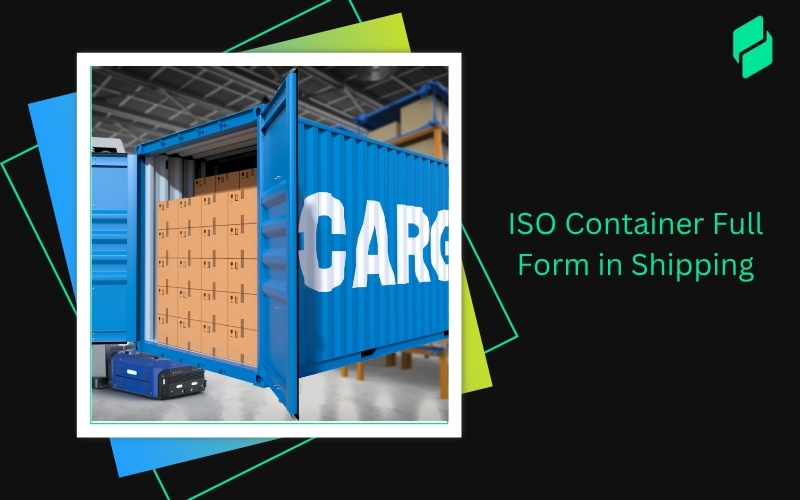Re-export, a pivotal concept in the world of international trade, often stirs curiosity among businesses looking to expand their horizons.
Unlike the conventional import-export process, It involves shipping goods from one country to another, only to be exported again to a third destination. This strategic move allows businesses to navigate new markets and optimize supply chains without directly sourcing products from the original country.
Dive into the world of this with us as we explore its significance and impact on global trade dynamics.
Optimize your business: use unlimited savings with Pazago fulfilled now!
Get Started ->Understanding Re-Export
It plays a crucial role in international trade, allowing goods to cross borders without modification in the transit country. This section delves into the definition, legal framework, and distinctions between this and traditional import-export processes.
Definition
It involves the movement of goods imported into a country and then exported to a different destination.
These goods do not undergo any significant transformation or modification while in the transit country, maintaining their original form and characteristics.
Legal Framework for Re-Export: Ensuring Compliance
The process of reexports is governed by a comprehensive legal framework that ensures adherence to international trade regulations and customs requirements.
Businesses engaging in such activities must be well-versed in the legalities of cross-border trade, including the specific rules and regulations of the countries involved in the transaction.
Documentation and Record-Keeping in Re-Export
Proper documentation is crucial in this process. This includes obtaining the necessary permits, licenses, and certificates to move goods across international borders.
Maintaining accurate records of the goods being reexported is essential for compliance with customs authorities and tracking the flow.
Distinguishing Re-Export from Import and Export
While it shares similarities with import and export, it is distinct in its purpose and execution. Unlike direct import or export, it involves an intermediary step where goods are temporarily brought into a country before being sent to their final destination.
This distinction is essential for businesses to understand, as it impacts international trade's legal and logistical aspects.
The Process of Re-Exporting: Navigating the Steps
This involves a series of steps that ensure the smooth movement of goods from one country to another, with an intermediary stop in a transit country. Understanding the process is crucial for businesses leveraging this strategy in international trade.
- Identification of Goods: The first step in this process is identifying the goods to be re-exported. This involves determining the products' eligibility based on the regulations of the involved countries.
- Compliance with Legal Requirements: Businesses must ensure that the goods comply with the legal requirements of the transit and destination countries. This includes adhering to export control laws, trade agreements, and any specific product restrictions.
- Obtaining Necessary Documentation: Proper documentation, including export licenses, permits, and certificates of origin, is essential for reexporting. The documentation requirements vary depending on the nature of the goods and the countries involved.
- Customs Clearance: The goods must undergo customs clearance in the transit country. This involves declaring the goods to customs authorities and ensuring that all duties and taxes are paid or accounted for.
- Transportation and Logistics: Arranging the transportation of goods is a critical step in this process. Businesses must choose the most efficient and cost-effective mode of transport, considering the nature of the goods and the distance between the countries.
- Re-Export Declaration: Sometimes, the declaration may be required when the goods leave the transit country. This declaration provides details about the goods and their final destination.
- Customs Clearance in the Destination Country: Upon arrival in the destination country, the goods must clear customs again. This involves presenting the necessary documentation and ensuring the goods comply with the country's import regulations.
- Delivery to the Final Destination: The final step in this process is to deliver the goods to the intended recipient in the destination country. This may involve further logistics arrangements and compliance with local regulations.
Each step could be significantly optimized using a platform like Pazago, which offers detailed insights and logistics support.
After walking through the steps, let's weigh the pros and cons of re-export. Shall we?
Benefits and Challenges of Re-Export
It offers a strategic advantage in international trade, yet it has challenges. Understanding both aspects is crucial for businesses considering this approach.
Benefits of Re-Export
- Accessing New Markets: It enables businesses to reach markets that might be inaccessible due to direct trade restrictions or other barriers.
- Optimizing Supply Chains: This process streamlines companies' supply chains, reducing transit times and costs and ensuring more efficient delivery of goods.
- Utilizing Tariff Benefits: In some cases, this can take advantage of preferential tariff agreements between the transit and destination countries, leading to cost savings.
Challenges of Re-Export
- Compliance with Trade Regulations: Navigating the complex web of international trade regulations is a significant challenge. Ensuring compliance with the laws of the transit and destination countries is essential.
- Documentation Management: It requires meticulous documentation, including permits, licenses, and customs declarations. Managing these documents can be daunting.
- Risk Management: There are inherent risks in international trade, such as political instability, currency fluctuations, and logistical uncertainties. Managing these risks is crucial for the success of this operation.
Overcoming these challenges becomes more manageable with Pazago, which offers tools to simplify documentation and provide critical market insights.
Let's shift gears and explore why nations get into the game. It's fascinating, right?
Why Do Countries Re-Export?
It is a strategic practice embraced by countries for various reasons, all aimed at enhancing their economic and trade positions. Understanding these motivations provides insight into the global trade dynamics and the role this plays in it.
- Accessing New Markets: Countries re-export goods to bypass trade barriers and access markets that might be unreachable due to restrictions or high tariffs.
- Leveraging Trade Agreements: It allows countries to take advantage of favorable trade agreements or lower tariffs in transit countries, thereby reducing costs and increasing competitiveness.
- Optimizing Supply Chains: It helps countries streamline their supply chains, ensuring efficient movement of goods and reducing transit times and costs.
- Enhancing Economic Growth: Countries can boost their trade volumes, contributing to economic growth and diversification.
- Meeting Regional Demands: Countries may do this to meet the specific demands of regional markets, primarily when they can source or produce goods more efficiently than the destination country.
- Strengthening Diplomatic Ties: It can strengthen diplomatic and trade relationships between countries, fostering cooperation and mutual economic benefits.
Before we wrap up, let's examine a real-world example to understand this in action.
Examples of Re-Export in Practice
It is a versatile strategy used across various industries. Below are examples illustrating how reexport is applied in practice, particularly in the electronics and agricultural sectors.
Re-Exporting Electronics: Leveraging Tariff Rates
Consider a scenario in which a company in Country A manufactures electronic components and aims to sell them to Country C, where there is high demand.
However, direct export from Country A to Country C incurs high tariffs. To navigate this, the company exports the components to Country B, where tariffs are lower, and then re-exports them to Country C.
This strategy allows the company to leverage favorable tariff rates in Country B, making the components more competitive in Country C's market.
Re-Exporting Agricultural Products: Accessing Multiple Markets
In another example, a trading company in Country X specializes in agricultural products. The company sources high-quality grains from various countries and consolidates them in Country X.
From there, the company sends back the consolidated grains to multiple markets in Countries Y and Z. This strategy enables the company to access diverse markets, optimize logistics, and meet the specific demands of different regions.
Moreover, a platform like Pazago can offer exporters and importers an edge in such strategic moves by providing vital market intelligence and logistics solutions.
Conclusion
In summary, it is a critical strategy in international trade, enabling access to new markets and optimizing supply chains.
However, success requires strict compliance with trade regulations, careful documentation management, and strategic planning. By mastering these aspects, businesses and countries can effectively leverage to enhance their global trade presence and drive economic growth.


.png)








